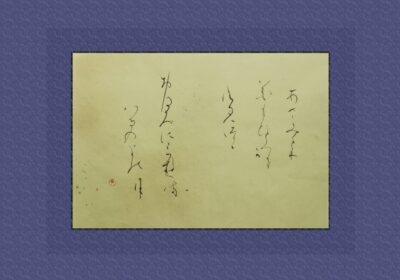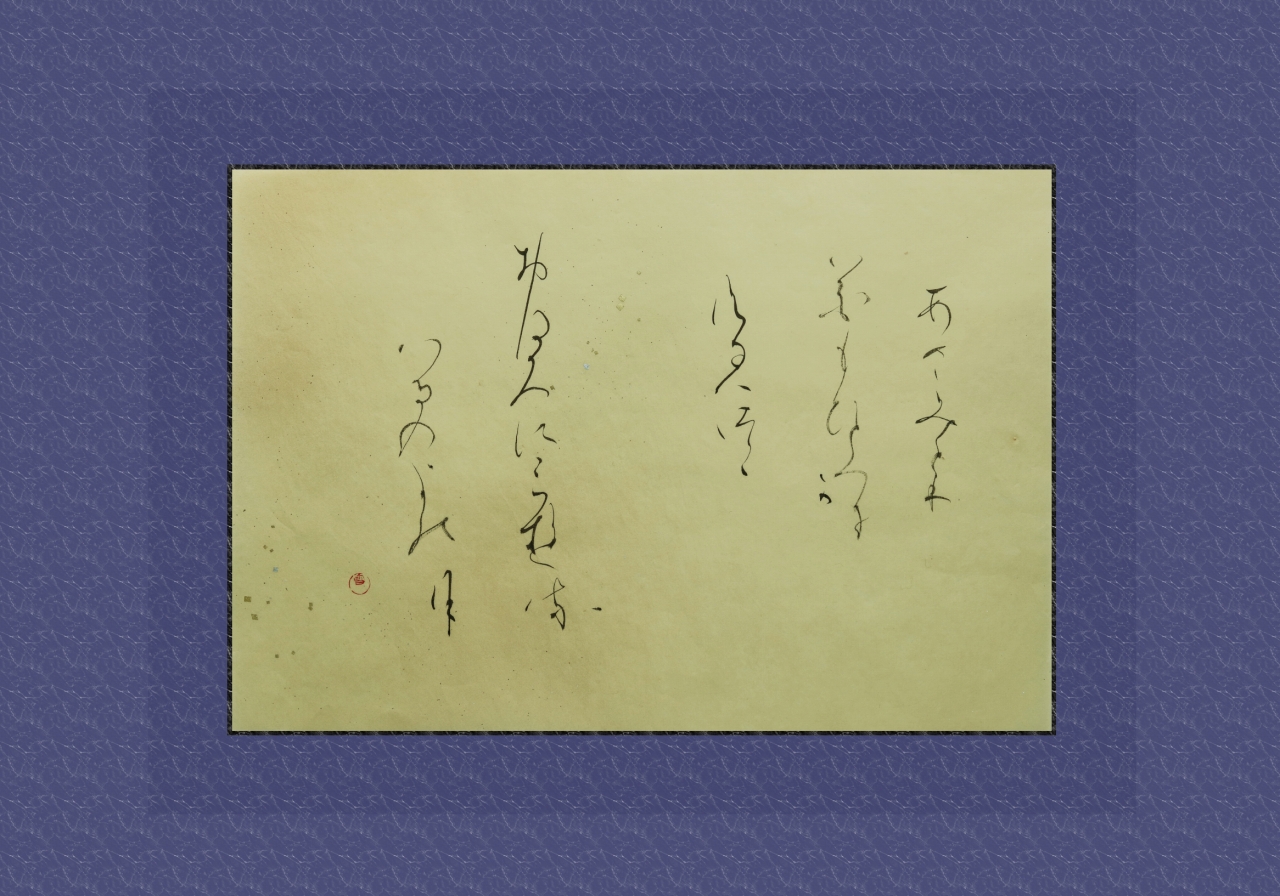#186 I can see a hazy moon on a spring night,…

| Size: | 25×37 cm |
|---|---|
| Dressing: | framed |
What kind of verse?
| verse: | asa-midori, hana mo hitotsu ni kasumi tsutsu, oboro ni miyu ru, haru no yo no tsuki |
|---|---|
| (imho): | I can see a hazy moon on a spring night, bighting yellowish green color and blending with blossoms. |
| poet: | A daughter of Sugawara, Takasue |
| in: | 1043 |
brief comment
During the Heian period in Japan, around 1000 years ago, the Tenjo-bito, a class of court nobles, engaged in refined cultural pursuits, including elegant Japanese court music and poetic exchanges. One such activity involved the evaluation of the merits and shortcomings of spring and autumn, reflecting the sensitivity fascination with the beauty of nature and seasonal transitions.
In a particular instance, those who favored autumn were in the majority. However, amidst this prevailing sentiment, a poet who held a preference for spring composed a waka poem expressing their admiration for the season. This poem served as a subtle yet poignant reminder of the enduring allure of spring, despite the prevailing preference for autumn among the participants.

